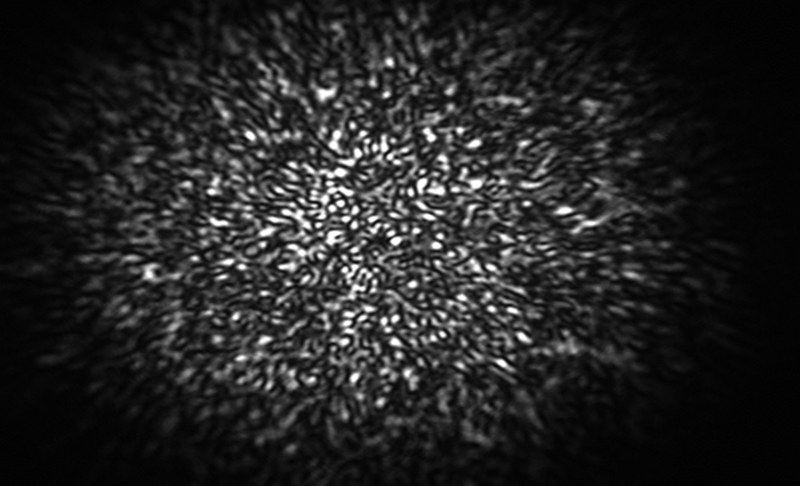Researchers from the DNOLL research group convert the bass chords of a song by the group 'Queen' into an image
Aug 24, 2020
Cristina Masoller, Pablo Amil, Donatus Halpaap and Jordi Tiana-Alsina are researchers from the UPC Physics Department at the Terrassa Campus. The team of researchers have detected audio signals at a distance, without listening to the emitter, and have converted them into images using laser light. The experiment, which was performed by recording the first bass chords of the song 'Another one bites the dust' by the British group 'Queen', has been published in the magazine 'Optics Express'. The method has been baptized with the name 'Best Pixel' and has had the collaboration of Italian scientists from the Università degli studi di Catania.
In 1980, the British group ‘Queen' led by the famous singer Freddie Mercury released the album' The Game 'which included the hit‘ Another one bites the dust'. Now, this famous song is part of an experiment thanks to which a group of researchers from the research group in Nonlinear Dynamics, Nonlinear Optics and Lasers (DONLL) of the Universitat Politècnica de Catalunya · BarcelonaTech (UPC) in Terrassa has managed to transform in images the vibrations caused by the famous notes of the bass of this song, without the researchers being able to hear them.
The researcher Cristina Masoller explains that "there are many research groups working in this line. With our experiment we provide a new method, which we have called 'Best Pixel', much simpler and more effective, with which we can visualize sound vibrations from a source that we didn't hear."
And is that 'Best Pixel' consists of using laser light to generate an image that moves with sound. This image is called a 'speckle' and is the product of the wave interference captured by a coherent light source such as the laser. Masoller argues that "we have projected laser light onto a sound source that interprets the bass chords of the song 'Another one bites the dust' by 'Queen' in conditions where we couldn't hear it. So due to vibrations, the speckle moves. If we videotape this movement that reveals the laser light, we get a film with a series of dots or pixels that are actually the image of the sound produced by the bass. It is as if we could see the vibrations of the leaves of a plant in a room caused by the conversation of two people, "says Masoller.
The 'Best Pixel' method could have different uses in the industrial field, such as creating remote noise detectors in places that are difficult for technicians to access, such as ventilation systems, pumps, or underground or refrigeration extraction systems. With a technology based on 'Best Pixel', maintenance managers could anticipate breakdowns and monitor equipment, obtaining images of vibrations caused by mechanisms subjected to constant operation and suffering from imbalances, wear, misalignment, bearing defects , or cracks and fractures that can cause excessive vibrations.
Apart from Cristina Masoller, researchers Pablo Amil, Donatus Halpaap and Jordi Tiana-Alsina, from the UPC Physics Department, have also participated in the study, and has had the collaboration of scientists from the Università degli studi di Catania.

Share: